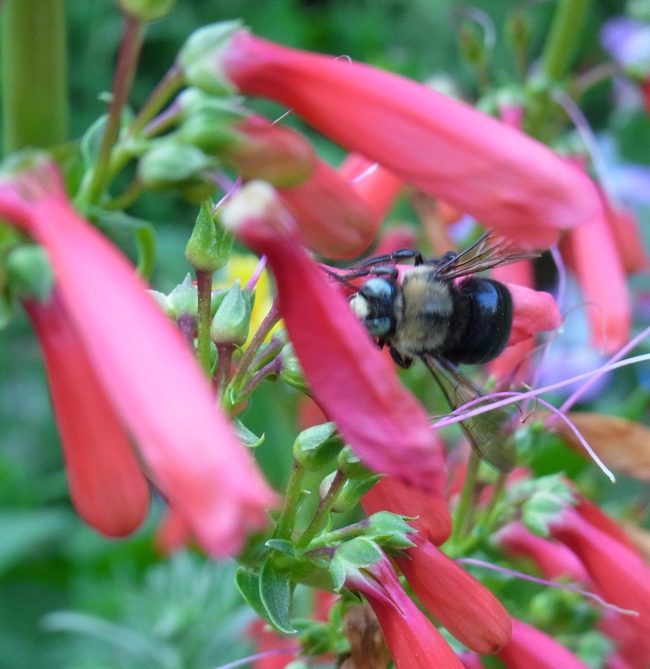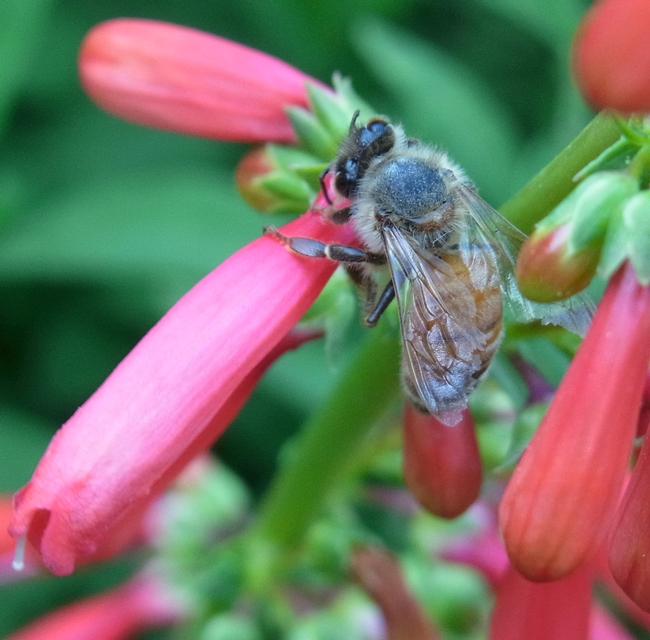Bees need flowers that correspond to their body size and tongue length in order to effectively access the nectary located at the flower base, so a well-designed bee garden includes plants that provide a variety of flower shapes and sizes. Small bees with short tongues, for example, need a small, open flower like yarrow to feed effectively.
To further complicate matters, some bees have learned that they can access otherwise unavailable flower resources by nectar robbing. These bees have learned to chew a hole at the base of flowers; through this they insert their tongue into the flower to access a nectar reward they would otherwise be unable to reach. Since the insect never enters the flower there is no pollination, and ecologists are now beginning to study this behavior to determine if it impacts flower populations in the wild.
But that's not the end of the story. Clever honey bees will observe the larger bees creating holes and will use them as well. Nectar robbing is often seen on tubular flowers, and in the Haven we see it most frequently with carpenter bees and bumble bees on penstemon and salvia.



